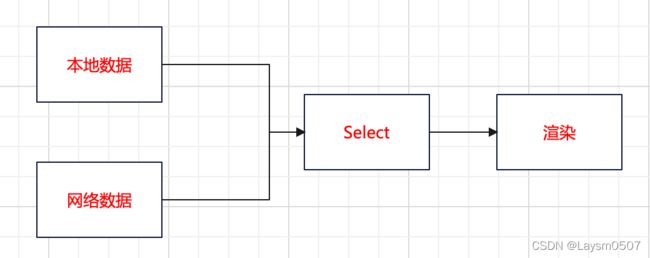Kotlin协程的那些事 ---- 管道Channel
Flow被称为是冷流,既然有冷流,那么就有热流,管道Channel就是热流。Channel是一个并发安全的队列,主要用于处理协程之间的通信

发送者和接受者是两个不同的协程,两者之间发送传递数据就是通过这个管道,一个send,一个receive
val channel = Channel<String>{ }
viewModelScope.launch {
channel.send("123")
}
viewModelScope.launch {
val receive = channel.receive()
if(receive == "123"){
Log.e(TAG,"收到了")
}
}
Channel创建了一个通道,用来发送字符串的,那么协程1发送了1个数据之后,在协程2中接收到了这个参数,从而继续执行后续的操作
管道 Channel
- 1 Channel的容量
- 2 Channel的迭代
- 3 Channel的构建器
-
- 3.1 produce
- 3.2 actor
- 4 Channel的关闭
- 5 await多路复用
-
- 5.1 传统方式
- 5.2 select
- 5.3 多Channel复用
- 5.4 SelectClause类型解析
- 6 Flow的多路复用
- 7 协程的并发安全问题
1 Channel的容量
既然Channel是一个队列,那么就会有容量,默认情况下capacity = 1
public fun <E> Channel(
capacity: Int = RENDEZVOUS,
onBufferOverflow: BufferOverflow = BufferOverflow.SUSPEND,
onUndeliveredElement: ((E) -> Unit)? = null
): Channel<E> =
when (capacity) {
RENDEZVOUS -> {
if (onBufferOverflow == BufferOverflow.SUSPEND)
RendezvousChannel(onUndeliveredElement) // an efficient implementation of rendezvous channel
else
ArrayChannel(1, onBufferOverflow, onUndeliveredElement) // support buffer overflow with buffered channel
}
同时,还有一个缓存区BufferOverflow用来存储接收的数据,当缓存区满了之后,send就会挂起,直到缓存区有了新空间;同样,如果缓存区为空,receive就会挂起
2 Channel的迭代
Channel是有迭代器的,通过拿到管道的迭代器,可以拿到收取的数据,可以代替receive
viewModelScope.launch {
(1..3).asFlow().collect {
channel.send("123")
}
}
viewModelScope.launch {
val iterator = channel.iterator()
while (iterator.hasNext()){
Log.e(TAG,"收到了 ${iterator.next()}")
}
}
3 Channel的构建器
在前言中,有使用到一种构建器就是Channel可以直接构建一个管道,下面还有2种构建生产者或者消费者协程管道方式
3.1 produce
produce用于生成一个ReceiveChannel,这个管道可用于接收数据,相当于创建了一个生产者,这同样是CorotinueScope的一个扩展函数,相当于创建一个协程,同时又创建了一个管道
val channel= viewModelScope.produce<String> {
send("123")
}
viewModelScope.launch {
val receive = channel.receive()
if(receive == "123"){
Log.e(TAG,"收到了")
}
}
3.2 actor
与produce相反,actor创建的是一个SendChannel,用于发送数据的通道,在协程作用域中可以接收数据
val channel = viewModelScope.actor<String> {
val receive = receive()
if (receive == "123") {
Log.e(TAG, "收到了")
}
}
viewModelScope.launch {
channel.send("123")
}
4 Channel的关闭
因为数据的发送和接收都是在协程中执行的,当协程执行完毕之后,Channel也就关闭了,这是自然的关闭
如果 主动调用Channel的close方法,Channel就会立即停止发送新的元素,Channel的属性 isClosedForSend 立即返回true
val channel = viewModelScope.actor<String>(Dispatchers.Main) {
while (true){
val receive = receive()
if (receive == "123") {
Log.e(TAG, "收到了")
}
}
}
viewModelScope.launch {
(1..5).asFlow().collect {
delay(500)
channel.send("123")
}
}
delay(1000)
Log.e(TAG, "准备关闭管道")
channel.close()
当1s钟之后,关闭了通道,这个时候,将会立刻停止发送数据,接收端抛出异常 ClosedReceiveChannelException 提示当前通道已经关闭了没法接收数据
5 await多路复用
多路复用是网络中的一个概念,传输媒体的带宽或者容量往往大于单一传输信号的需求,希望在一个信道同时传输多路信号
在Channel中,就只有一个管道,那么我希望在接收方能够接收多种数据来源,而不是单一的发送一个String数据,就接收一个String数据

上面就是一个场景,在请求数据的时候,一般会有2种数据来源,从云端或者本地,但是两者获取数据的速度是不一致的,Select函数就是来做选择,看哪一端的数据来的最快,那么就拿谁的数据来做渲染
fun getLocal() = viewModelScope.async {
delay(2000)
"这是本地的数据"
}
fun getNet() = viewModelScope.async {
delay(1000)
"这是网络的数据"
}
5.1 传统方式
如果要根据哪个api返回的数据快慢来决定渲染哪个数据,只是通过一个协程是办不到的,getLocal和getNet是异步的,那么在拿数据的时候,只有等到最慢的返回之后,才能拿到全部的数据,所以只能通过开2个协程,单独监听各自的数据返回
5.2 select
那么在select函数中,就不需要开辟两个协程就能达到2个协程的效果
viewModelScope.launch {
val result = select<Response<String>> {
getLocal().onAwait{Response(it)}
getNet().onAwait{Response(it)}
}
Log.e("TAG","${result.t}")
}
看这里没有使用到await,而是onAwait函数,相当于在select中注册了一个回调,不管哪个await先返回数据,就将这个数据回调出去
class Response<T>(var t:T)
这样就使用了一个协程,完成了2个协程能够做完的事情
5.3 多Channel复用
类似于await复用,有多个通道发送数据,检测到哪个通道发送到了数据,就将数据打印
fun CoroutineScope.channel1() = produce<String> {
delay(200)
send("123")
}
fun CoroutineScope.channel2() = produce<String> {
delay(400)
send("123456")
}
viewModelScope.launch {
val result = select<Response<String>> {
channel1().onReceive { Response(it) }
channel2().onReceive { Response(it) }
}
Log.e("TAG", "${result.t}")
}
这里还是跟await有点儿类似,没有使用receive,而是使用了onReceive回调
5.4 SelectClause类型解析
既然上面都用到了select函数,那么到底哪些事件能够被select呢?
从SelectBuilder中可以看到,SelectClause0、SelectClause1、SelectClause2类型的事件都可以被select
public interface SelectBuilder<in R> {
/**
* Registers a clause in this [select] expression without additional parameters that does not select any value.
*/
public operator fun SelectClause0.invoke(block: suspend () -> R)
/**
* Registers clause in this [select] expression without additional parameters that selects value of type [Q].
*/
public operator fun <Q> SelectClause1<Q>.invoke(block: suspend (Q) -> R)
/**
* Registers clause in this [select] expression with additional parameter of type [P] that selects value of type [Q].
*/
public operator fun <P, Q> SelectClause2<P, Q>.invoke(param: P, block: suspend (Q) -> R)
/**
* Registers clause in this [select] expression with additional nullable parameter of type [P]
* with the `null` value for this parameter that selects value of type [Q].
*/
public operator fun <P, Q> SelectClause2<P?, Q>.invoke(block: suspend (Q) -> R): Unit = invoke(null, block)
/**
* Clause that selects the given [block] after a specified timeout passes.
* If timeout is negative or zero, [block] is selected immediately.
*
* **Note: This is an experimental api.** It may be replaced with light-weight timer/timeout channels in the future.
*
* @param timeMillis timeout time in milliseconds.
*/
@ExperimentalCoroutinesApi
public fun onTimeout(timeMillis: Long, block: suspend () -> R)
}
SelectClause0事件:没有返回值的事件。例如join,对应的onJoin就是SelectClause0事件,是无参构造函数
fun CoroutineScope.co1() = launch {
delay(100)
Log.e(TAG,"co1 finish")
}
fun CoroutineScope.co2() = launch {
delay(10)
Log.e(TAG,"co2 finish")
}
没有返回值,就是Unit类型
select<Unit> {
co1().onJoin{ print("co1 finish")}
co2().onJoin{ print("co2 finish")}
}
SelectClause1事件:那么像await,receive就是有返回值,那么就是对应的onAwait和onReceive,通过回调的方式拿到返回值
SelectClause2事件:对应的事件有返回值,而且需要一个额外的参数,例如Channel的send函数,需要发送一个数据,对应的onSend就需要发送一个数据
select<Unit?> {
launch {
delay(200)
channel1().onSend("2000"){
print("send in $it")
}
}
launch {
delay(100)
channel2().onSend("1000"){
print("send in $it")
}
}
}
6 Flow的多路复用
例如之前的例子,从本地和网络拿数据,需要开启两个协程取数据,那么其实还可以通过merge操作符,将两个流合并为一个流输出
viewModelScope.launch {
listOf(::getLocal,::getNet)
.map { kFunction0 ->
//执行了函数
kFunction0.invoke()
}.map { function ->
flow {
emit(function.await())
}
}.merge().collect {
Log.e(TAG,"结果 :$it")
}
}
7 协程的并发安全问题
和Java的多线程一样,多协程的并发也是会带来安全问题
解决的方式:Channel、Mutex(加锁)、信号量等,和Java中的处理方式一致